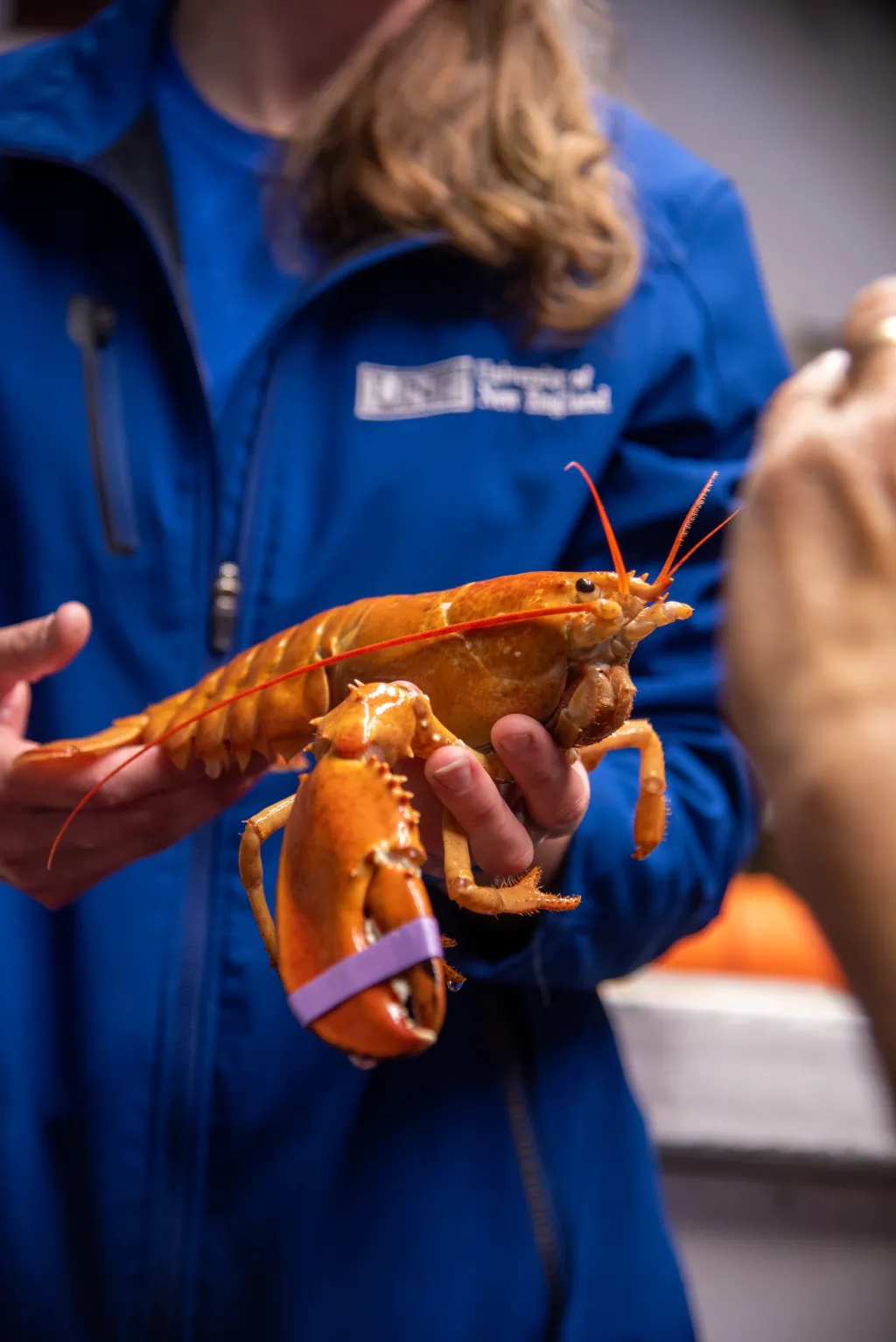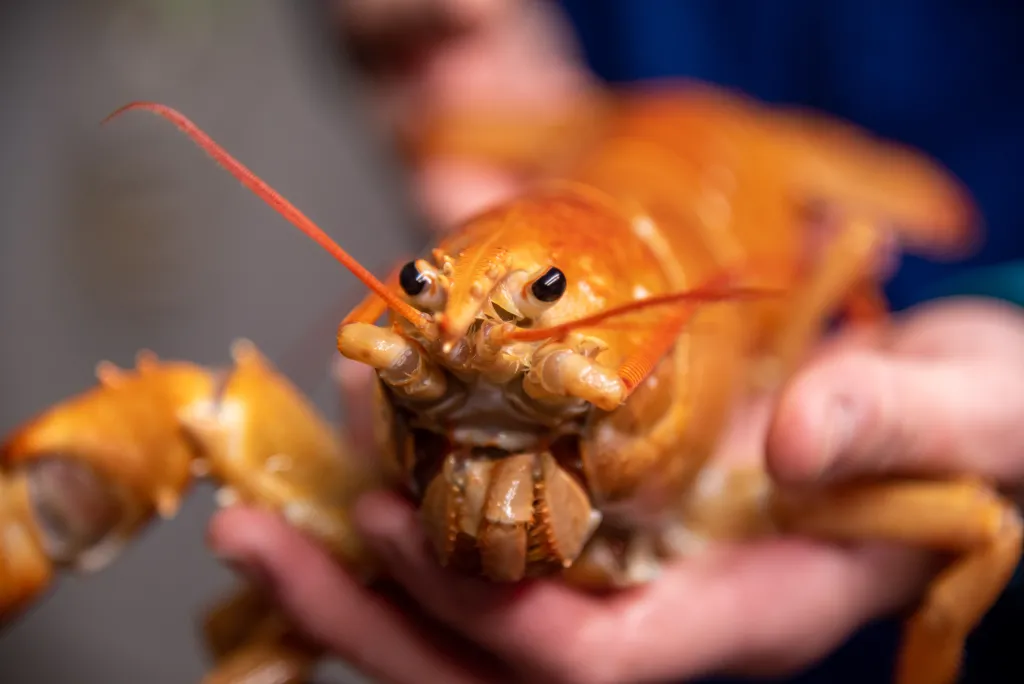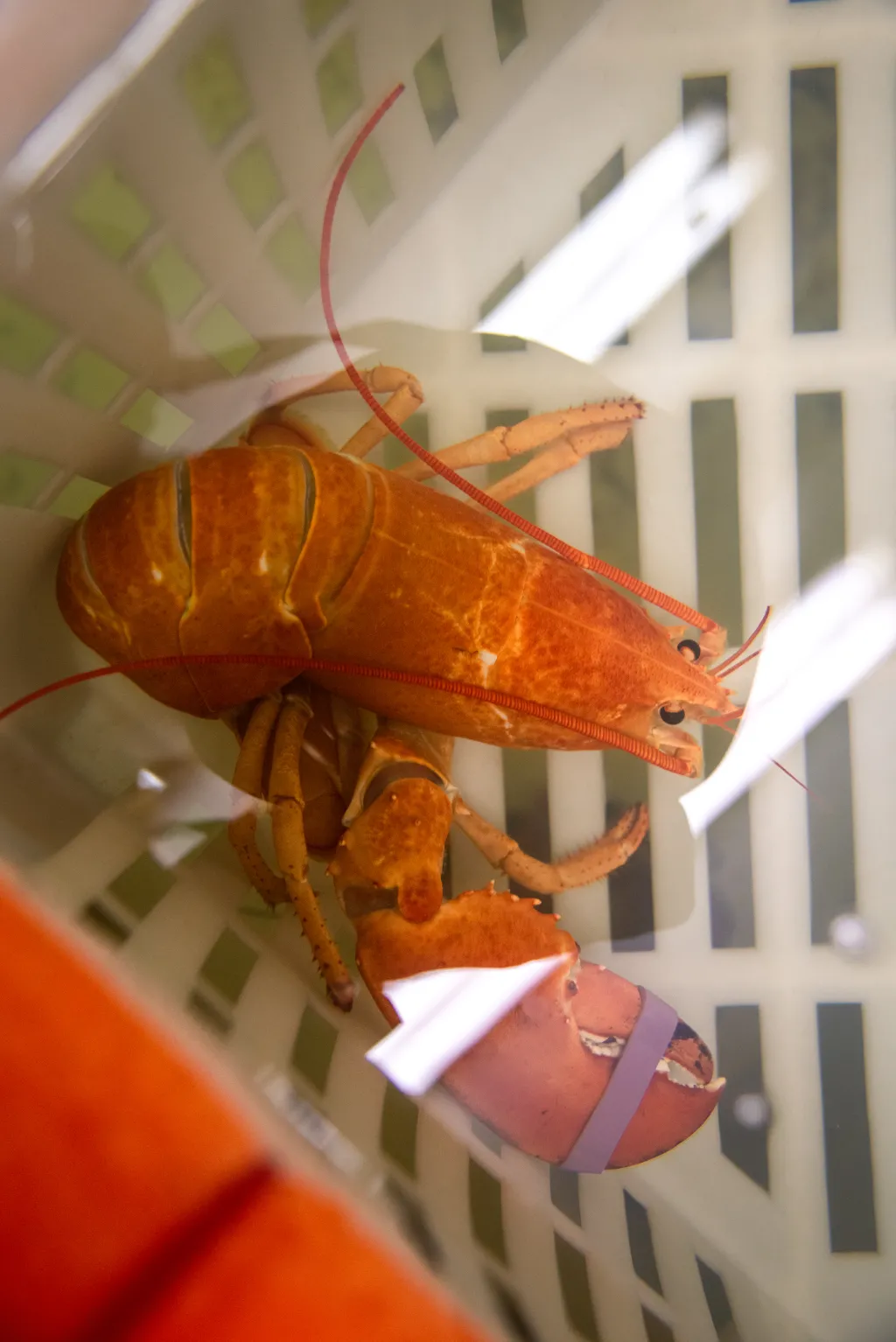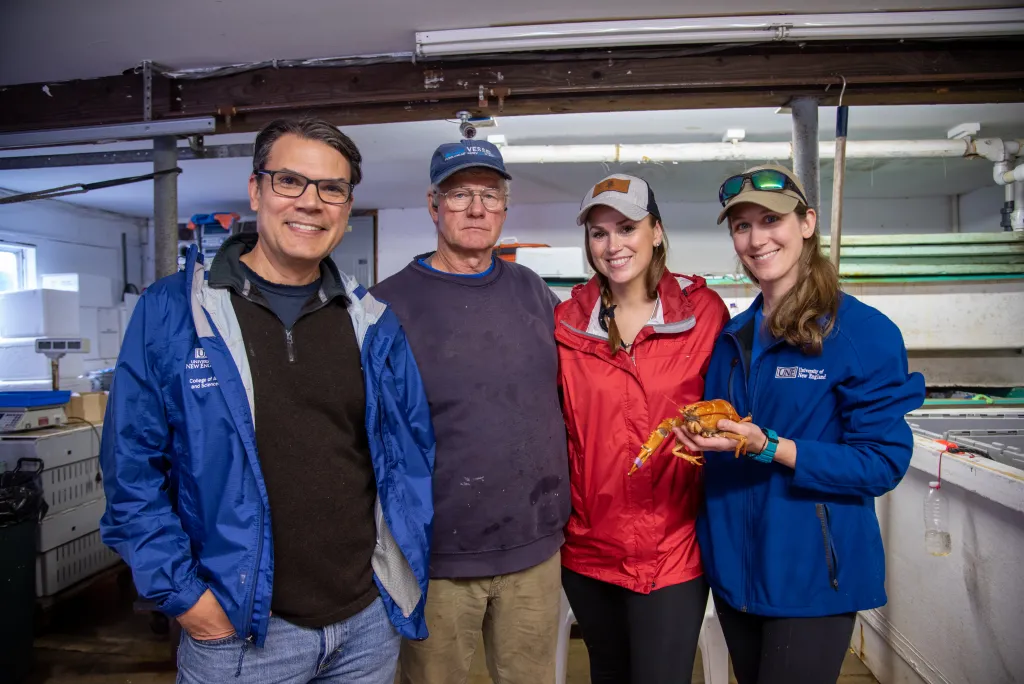UNE’s latest rare, donated lobster is an orange, one-clawed wonder
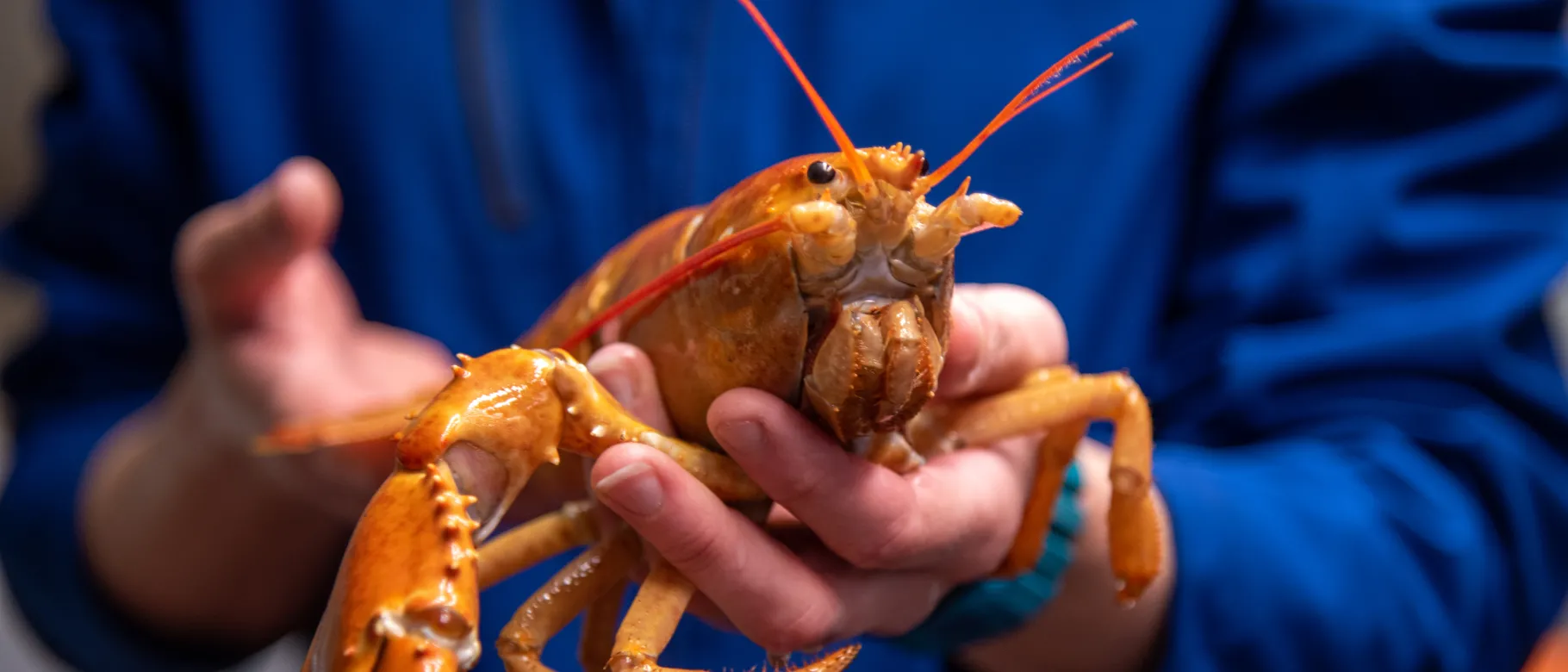
Put down that bib — this lobster may be bright orange, but she’s alive, well, and ready to settle into her permanent home at the University of New England.
UNE welcomed its latest crustaceous addition on Monday, June 5, joining the spectrum of rare, multicolored lobsters that have been donated to UNE’s Arthur P. Girard Marine Science Center over the years for education, outreach, and research.
UNE has long partnered with public and private research entities to study lobsters, including National Science Foundation, Maine Department of Marine Resources, and Bigelow Laboratory for Ocean Sciences, as well as other colleges and universities. Research projects include studying the impact of warming in the Gulf of Maine on lobster larvae and their success in growing to adulthood.
This new lobster, who is yet to be named, was caught in Casco Bay by Capt. Gregg Turner, a Scarborough fisherman, and his crew Sage Blake and Mandy Cyr. It’s the second rare lobster found by the crew and donated to UNE; the first, a Calico lobster named Sprinkles, was captured and then donated to UNE’s Marine Science Center this past winter.
The odds of catching an orange lobster are about one-in-30-million. By comparison, Blue lobsters are a one-in-two million find and split-colored lobsters (like was donated to UNE in 2021) are a one-in-50-million catch.
Because she only has one claw, the orange lobster is known as a cull. Lindsay Forrette, M.S., lab coordinator and chemical hygiene officer in UNE’s School of Marine and Environmental Programs, explained she likely lost her claw in an altercation with another lobster or fish, but she also said the lobster’s lack of dual claws presents a unique opportunity for students to learn about limb regrowth and how lobsters adapt to injury.
“We plan to document the regrowth of this lobster's claw in real time, something we've only done once before with Banana, our female yellow lobster,” Forrette remarked. “Rare lobsters, like this brilliant orange one caught by Turner’s Lobsters, are excellent ambassadors for education because they spark so much curiosity. Sharing these amazing animals with our students and visitors is a special opportunity that wouldn't be possible without the Maine lobstering community all along the coast.”
Further, the orange lobster’s unique coloration is likely due to a combination of genetic and environmental factors, explained Charles Tilburg, Ph.D., academic director of the School of Marine and Environmental Programs and director of the Marine Science Center.
“The presence of these lobsters at UNE allows our students to study the effects of both genetics and diet on the color of the lobsters’ shells,” Tilburg remarked. “Our students will now have real-life examples of these complex phenomena that are exciting, fascinating, and educational. I could not be more thrilled that the folks at Turners’ Lobsters thought of us when they found this beautiful creature.”
Once the lobster is fully settled into her tank, students in the School of Marine and Environmental Programs will meet in hopes of giving her a name.
View additional press coverage at WMTW News 8, Boston.com, Spectrum News Maine, Q97.9, 94.9 WHOM, 92 Moose, B98.5, the Bangor Daily News, ArcaMax, Fox 28, Free Republic, WJCL ABC 22, WPBF ABC 25, Seacoast Current, Cheddar News, WABI, WGME CBS 13, Saco Bay News, Fox 23 Maine, Fox Weather, WJAR 10, ABC News 4, KTVZ News Channel 21, KESQ News Channel 3, Local News 8, Lee News, Yahoo! News (June 5), Yahoo! News (June 6), Yahoo! News (June 7) the The Morning Sentinel, United Press International, News One Place, Inferse, Pledge Times, NBC 5, WMUR 9, WBAL, WBTA, WBZ-TV, and WCVB 5.
